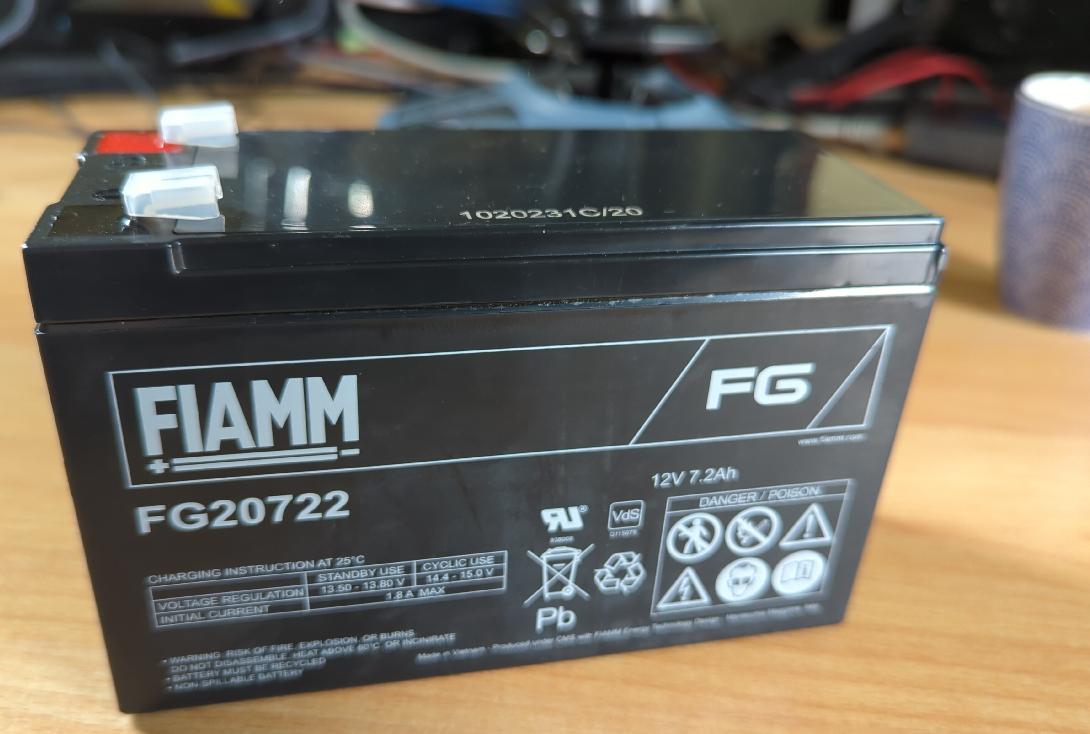
The electricity system in Germany is quite reliable but I always like a plan B. Thus, I run my cloud infrastructure behind a battery backup. As my two small NUC servers, a Fritzbox VDSL / Wi-Fi hub, a Raspberry Pi, an external hard drive and a cellular modem for backup connectivity have a relatively low power consumption of around 40 Watts, I can live with a relatively small uninterruptible power supply. 10 years ago I bought an ‘APC Back UPS ES 700‘ and could get around an hour’s worth of autonomy out of it for my setup. But batteries do not last forever, and 5 years have passed again since I last replaced the battery. When recently running a battery test, it reached 11.5 volts after only about 20 minutes. 11.5 volts is the voltage after which the battery starts to suffer when further discharged. That leaves 20% of the capacity unused, but I think it’s a good point to stop. As 20 minutes is a bit short, and the battery was definitely not getting any better, it was time to exchange it.
Availability, Delivery and Price
Fortunately, lead-gel batteries are not treated as hazardous goods by transportation companies in Germany, so anyone but my main online warehouse of choice could deliver it to a post box for around 30 euros, including shipping.
Capacity, Theory and Reality
Rated at 12V and 7.2 Ah, the theoretical capacity of the battery is 86.4 Wh. If the full capacity was usable, it could power my cloud for 2 hours. But to not damage the battery, 20% of the capacity has to remain in the battery, which brings down the usable capacity to 69.12 Wh. Further, let’s say the upscaling from 12V DC to 230V AC takes another 20% of the capacity. Hence, I would end up with around 55,2 Wh, i.e. 1 and 15 minutes until the battery would be down to a voltage of 11.5V.
In practice, I got 1 hour and 2 minutes out of the battery until it went below 11.5V and I stopped the exercise. This is quite close to the estimated time above. Perhaps a couple of charge / discharge cycles would improve this by a few minutes but I decided that it wasn’t worth the extra effort to find out.
Measuring Battery Voltage
Obviously, the best way to measure the battery voltage is directly at the poles of the battery. As my UPS has a battery slot that is easily accessible from the outside even while in operation, this would have been possible. However, I chose to use the indication provided by the ‘apcaccess‘ command that is part of the Debian ‘apcupsd‘ package, which supports my UPS. This is actually not good luck, but I specifically selected the particular make and model because of the Debian package support. As far as I can tell, the software is not provided by the UPS manufacturer, and hence a good example how 3rd party open source software can sell hardware.